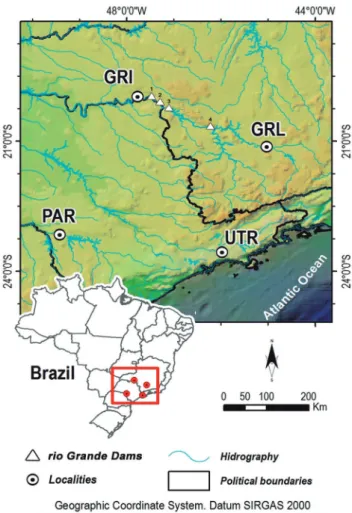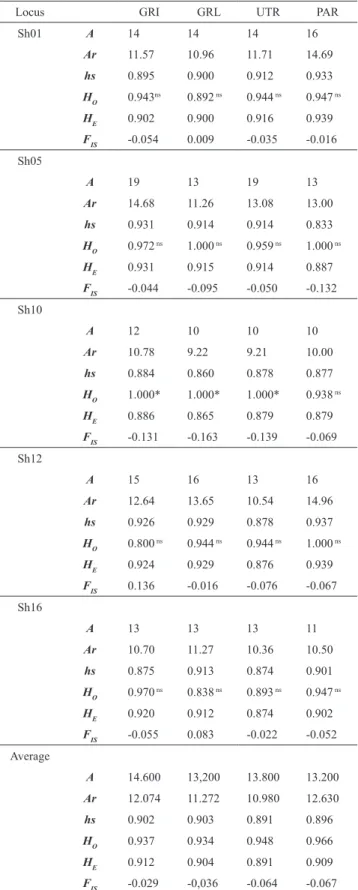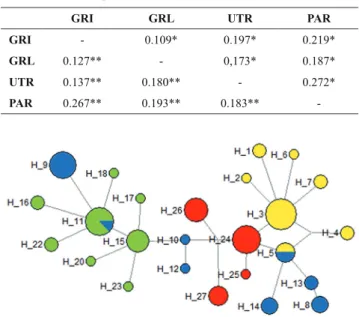Genetic structuring of Salminus hilarii Valenciennes, 1850 (Teleostei: Characiformes) in the rio Paraná basin as revealed by microsatellite and mitochondrial DNA markers
Texto
Imagem



Documentos relacionados
In the current study, primers for microsatellite (SSR) loci were used to investigate the molecular divergence among the three species, the genetic structure of the populations at
Ichthyofauna of the Ribeirão Frutal and tributaries, upper Rio Paraná basin, Minas Gerais, Southeastern Brazil..
In this work, we measured the genetic diversity of the stingless bee Plebeia remota based on molecular data obtained by analyzing 15 microsatellite loci and sequencing two
Keeney D, Heupel M, Hueter R and Heist E (2005) Microsatellite and mitochondrial DNA analyses of the genetic structure of blacktip shark ( Carcharhinus limbatus ) nurseries in
Other stud- ies have evaluated the levels of genetic variability in natural populations of tambaqui in the Amazon basin using differ- ent microsatellite and mtDNA markers and have
In this study, 15 microsatellite DNA loci used in comparative tests by the International Society for Animal Genetics were applied to the evaluation of genetic diversity and
Analysis of molecular variance (AMOVA) among 4 populations of Brycon hilarii considering the total number of individuals from each population, individuals collected only in
Despite the statistically significant inbreeding coefficient and deviations from the Hardy-Weinberg equilibrium observed, genetic diversity in this native Brazilian breed